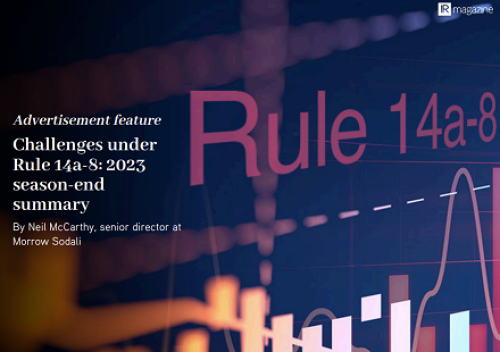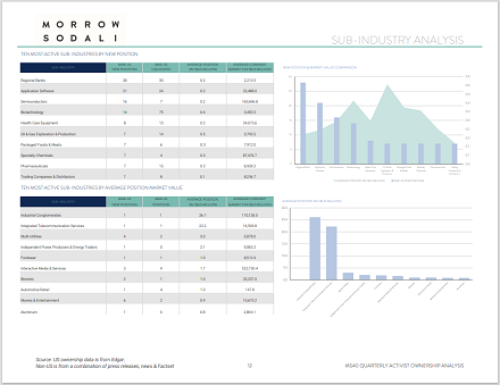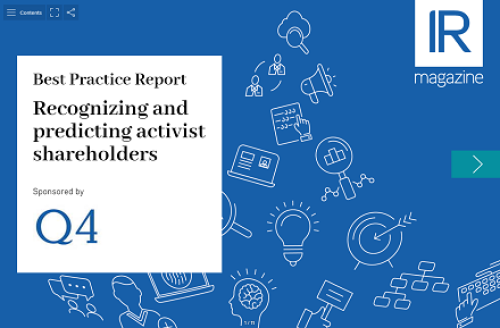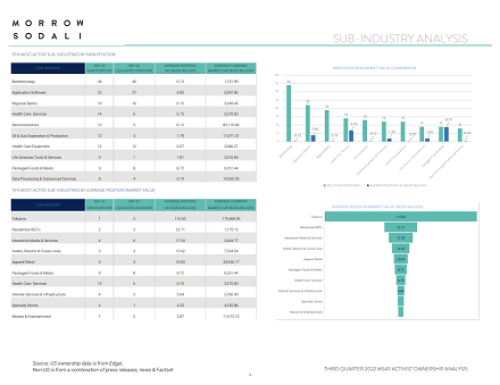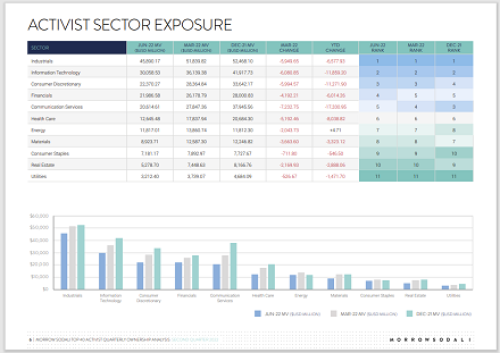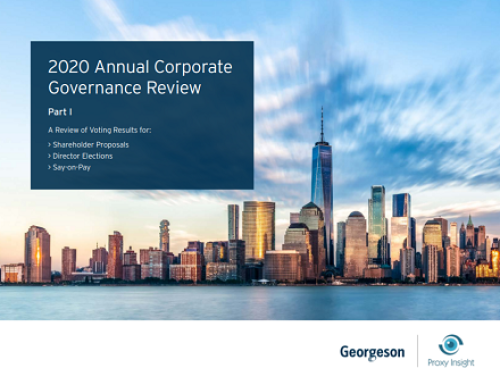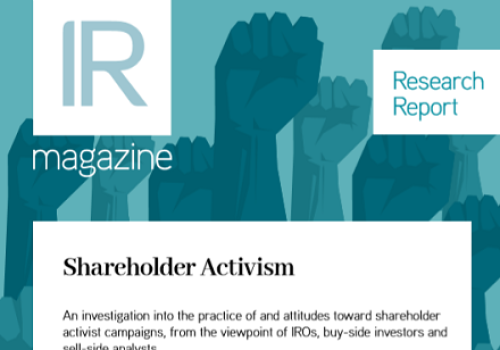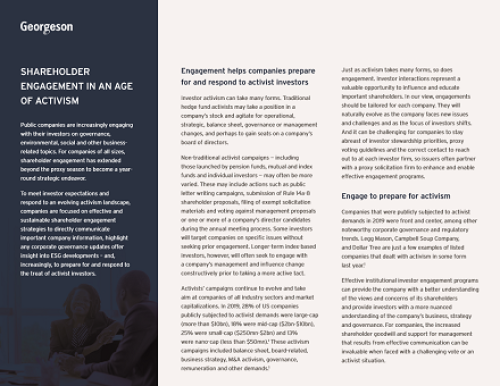The new Bob Dylan biopic, A Complete Unknown, reminds me of the Nobel laureate's often-quoted lyric: the times they are a changin’. That metaphorically holds true relative to the trends in activism, which are shifting in form and focus, heralding the start of a new, more institutionalized era.
A host of factors, including leadership transitions at high-profile activist firms, a lack of ‘low-hanging fruit’ and the tendency of company boards and their adversaries to settle rather than fight, have many in the activist world wondering if the days of the old-fashioned, two-fisted activist campaigns are numbered.
Carl Icahn, one of Wall Street’s original shareholder activists, will turn 89 years old in 2025. He’s had an incredible run, but as a recent front-page article in The Wall Street Journal declared, the celebrity activist investor is going extinct.
As activist giants like Icahn step away from the fray, so goes the era of the ‘corporate raider’. To be sure, there will still be high-profile corporate battles waged by the likes of top-notch activists including Elliott Management and Starboard Value. But even the titans have developed new targets and tactics that signal a new era of activism.
In 2025 and beyond, I predict that we’ll experience more campaigns launched against smaller corporate targets and more foreign targets, an increase in contested M&A deals and perhaps additional efforts aimed (pro and con) at companies’ ESG and DE&I policies. Moreover, large-cap companies that underperform their peers will remain on the radar screen, as always, and the well-capitalized activist firms will continue to scrutinize these targets.
Companies and boards will need to adapt to this new era by understanding their shareholder base better. It’s especially important to assess each shareholder’s need and desire for regular engagement – not just when a proxy vote is on the line – and to calibrate the company’s engagement practices accordingly to ensure they continue to be effective.
Smaller targets may equal big opportunities
To understand where the future is headed, it’s important to remember how activism as an asset class has evolved over the years. When it first emerged as a major phenomenon, activist investors operated from much smaller firms than those that exist today.
As those firms chalked up ‘wins’ that were accompanied by improved returns, they attracted more capital from investors and amassed significant pools of assets. As a result, the types of opportunities in which an activist might have participated in the past are now potentially too small for a larger activist to take a meaningful stake and put in the kind of work that's required to generate a substantial return.
Today, we are seeing the emergence of newer, smaller (but in some cases, growing) activist firms, many of which were launched by former employees of other successful activist investors. The newer entrants sprout from a different generation and take advantage of rapidly evolving technology, make use of social media and media attention to activism and play by increased disclosure rules. These players look very sharply into smaller companies where they can invest a meaningful ownership position relative to their firms' AUM in the hope of impacting change and unlocking value.
M&A opponents will say ‘no-deal’
The resurgence of the M&A market is another factor that I believe will spur activist campaigns in the year ahead. According to some estimates, M&A activity is expected to grow by another 10 percent overall in 2025 (including a 16 percent rise in private equity buyouts), as the fiscal and regulatory policies of the new administration in Washington take shape, economic activity remains robust and interest rates (hopefully) remain more subdued.
A robust M&A market will likely lead to more contested transactions. Activist investors launch M&A opposition campaigns to recalibrate offer prices, or in certain cases to scuttle deals because they believe there may be better alternatives.
We may see more activist initiatives such as the opposition by Glazer Capital, a New York-based hedge fund, to the acquisition of Squarespace by management and a private equity firm. In August 2024, Glazer challenged the initial offer of $44.00 per share for Squarespace, which ultimately led to an increase in the purchase price to $46.50 per share when the deal was consummated in October. Notably, the deal was completed by tender offer as the initial vote was impeded by proxy voting advisory firm support for the activist’s argument.
It would not be surprising to see activists dial up the level of opposition by mounting more aggressive proxy campaigns against M&A deals that they believe fall short from a valuation standpoint.
ESG and DE&I to appear on proxy ballots
Given the current polarized political climate, I expect to see a further increase in shareholder activism by organizations reacting to corporate ESG and diversity policies. A report by the Conference Board noted that the 2024 proxy season saw a rise in proposals from groups focused on companies’ ESG and DEI initiatives. These groups range widely on the political spectrum from those that oppose so-called ‘woke’ practices to others that supported policies which might be described as ‘progressive’.
One example of the type of activism we may see more frequently in the year ahead was the campaign by the Strategic Organizing Center (SOC) to elect a slate of directors to effect changes in labor and human capital policies at Starbucks. While SOC and Starbucks ultimately settled the matter without a shareholder vote, activist campaigns that are motivated by policy concerns rather than share value considerations may become more common. Some may achieve success, especially when the activist connects risk to shareholder value to the ESG values promoted. Also, based on the success seen at Warrior Met Coal by the AFL-CIO, it will be interesting to see if other investors take advantage of the 14a-4 rules to circumvent the 14a-8 limit of one shareholder proposal per proponent.
Regardless of the types of activist campaigns that launch in the coming year, one thing is certain – campaigns will be starting earlier. With the rules of the road set by advance notice bylaws provisions, countless successful activists must begin working on campaigns many months before the actual launch. And, by the same token, many companies are mounting year-round efforts to head off a proxy fight by engaging more actively and often with their shareholders.
Too early to tell
In summary, activism is not ‘yesterday’s news’ – but it is regrouping and refocusing in order to make new headlines in 2025 and beyond. It’s still early in the new year, and the activists’ and company playbooks will certainly evolve as developments warrant, so it’s worth keeping Dylan’s admonition in mind:
Come writers and critics who prophesize with your pen
And keep your eyes wide, the chance won't come again
And don't speak too soon, for the wheel's still in spin
And there's no tellin' who that it's namin'
For the loser now will be later to win
For the times, they are a-changin'.
As these times do change, I predict we will be crowning new celebrity activists emerging from these current campaigns, much as Dylan’s songs were given new relevance by the talented actors in the recent biopic.

